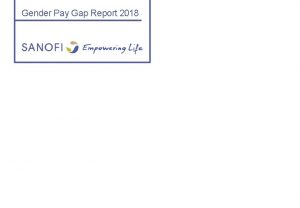Gender pay gap The overall pay gap stands






- Slides: 6

Gender pay gap? • The overall pay gap stands at 19. 1 per cent (2014) measured by gross hourly pay (median&mean aggregate) (1). This figure counts the whole workforce, full and part time. • This means that women work for free for one hour and forty minutes each day. • The gender pay gap worsens as women age – the pay gap is 6% for women aged 26 to 35, but 38% for women over the age of 60. Older women therefore face the dual discriminations of gender and age. • Whilst the gap has fallen significantly from 27. 5% in 1997, this figure is still above the EU 2014 average of 16. 4%, a range which includes Slovenia at 3. 2% and Estonia at 29. 9%

Gender Pay gap? • Women in their 20 s have reversed the gender pay gap, but their earning power is still overtaken by men later in life. Figures compiled by the Press Association have shown that between the ages of 22 and 29, a woman will typically earn £ 1, 111 more per annum than her male counterparts. • While younger women in their 20 s came out top in the earning stakes, the story was vastly different for workers in their 30 s. A man turning 30 in 2006 would have brought in on average £ 8, 775 more than a woman of the same age.

Gender pay gap

Causes of the gender pay gap • The motherhood penalty • Concentration in low wage sectors (occupational segregation) • Outright discrimination For these examples I’d need to find further statistics and then analyse this using economic theory

Solutions • Let’s see the gap – we want to see clear and meaningful figures on companies’ salaries. The previous voluntary approach did not work – April 2015 had seen only five large employers conducting and publishing gender pay audits (9). • Expand opportunities for quality flexible and part time working – employers can benefit from a diverse workforce and retaining talent • Improve rules on parental leave – it needs to be more financially rewarding to encourage men to take up more childcare (8). • Lift the national minimum wage – this would benefit all workers on low pay but particularly women as they are the majority of those on low pay • Challenge stereotypes to encourage men and women to enter jobs which are outside stereotypical gender roles. • The spread of gender quotas for company boards For the above solutions I’d what to know how they’d work and possible TWE factors

Topics to investigate Describe, in general terms, the recent trends in UK employment and earnings; Explain the above trends using the categories of : • Age, • Gender (use my Power. Point as a base but will be working on their own), • Ethnicity, • Occupation, • Region • Sector Pairs will be chosen by the random name generator











